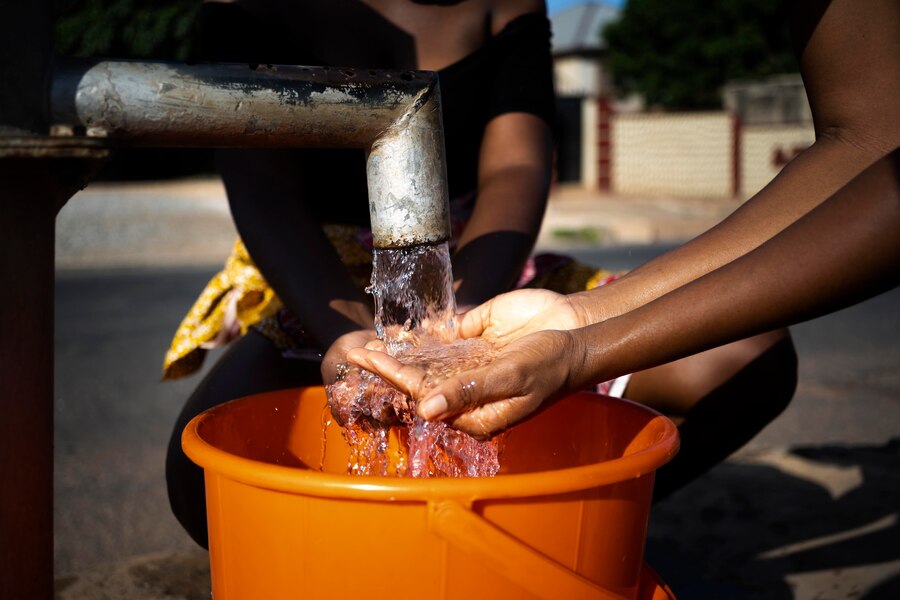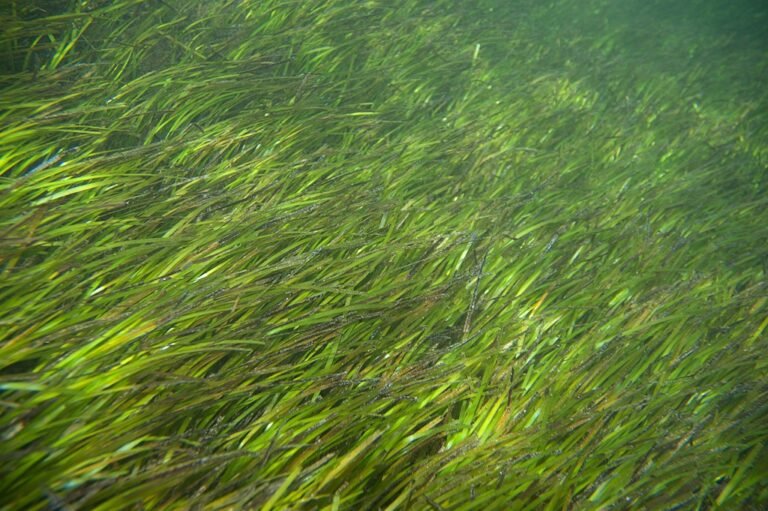Sustainable Water Management Practices: A Comprehensive Guide
Water is the essence of life. It keeps us alive, helps grow our food, powers industries, and nourishes the natural ecosystems that sustain the planet. But here’s a surprising fact: although water covers 71% of the Earth’s surface, less than 1% of it is fresh and accessible for us to use. This small fraction has to meet the needs of billions of people, and as populations grow, the pressure on our water resources only increases. Add climate change and pollution to the mix, and it’s clear we’re facing a global water crisis.
Take a moment to reflect: how often do we waste water without thinking? Whether it’s letting the tap run or ignoring a leaky faucet, every drop counts. Around the world, millions of people don’t have the luxury of clean water. Addressing this challenge isn’t just about saving water for ourselves today; it’s about ensuring future generations have access to this precious resource.
| Global Water Overview | Percentage |
|---|---|
| Earth’s Water in Oceans (Saltwater) | 97% |
| Freshwater (Accessible) | <1% |
| Locked in Glaciers and Groundwater | 99% of fresh |

In This Article
- What Is Sustainable Water Management?
- The Importance of Sustainable Water Management
- Sustainable Water Management in Agriculture
- Innovative Sustainable Water Management Practices
- Real-Life Examples of Sustainable Water Practices
- Conclusion: Actionable Steps
What Is Sustainable Water Management?
Water is essential to life—not just for drinking but for growing food, supporting industries, and maintaining the ecosystems we rely on. But here’s the catch: while Earth is mostly water, only about 1% of it is fresh and accessible for human use. With a growing population, increasing pollution, and the challenges of climate change, managing this precious resource responsibly has never been more important.
Sustainable water management means using water wisely today so that future generations can also meet their needs. It’s about finding a balance between how much we consume, how we conserve, and how we restore water systems. It’s not just about technology or policies—it’s about making thoughtful choices that consider environmental, social, and economic impacts.
Growing up near a river, I remember how clear and inviting the water used to be. It was where my friends and I played, where my family got drinking water, and where farmers irrigated their fields. But over the years, factories upstream began dumping waste into the river. The water became polluted, and what was once a source of life turned into a health hazard. That experience taught me how critical it is to protect our water resources.
Core Principles of Sustainable Water Management
- Efficiency: Cutting down on water waste through smarter technology and mindful practices.
- Equity: Ensuring that everyone, especially vulnerable communities, has access to clean, safe water.
- Resilience: Building systems that can adapt to challenges like climate change, droughts, and growing demand.
Why It Matters
According to the United Nations, 2.3 billion people live in water-stressed areas, and nearly half of them face severe shortages. Solving this problem requires global collaboration and action at every level, from individuals to governments.
Sustainable water management is not just a technical challenge; it’s a shared responsibility. By working together, we can ensure that clean, reliable water flows for generations to come.
Learn More: What Is Recycled Water Used For?
The Importance of Sustainable Water Management
Climate change, population growth, and wasteful practices are all pushing our water resources to their limits. Sustainable water management isn’t just an environmental responsibility—it’s a matter of survival.
Climate Change and Water Scarcity
Climate change is making water scarcity worse by disrupting rainfall patterns and increasing evaporation. Droughts are becoming more severe and frequent. For example, California has faced a significant drought almost every decade since 1917. One of the worst hits from 2012 to 2016, leaving farmlands parched and communities struggling. Across the Atlantic, Spain’s Catalonia region recently experienced what officials called the “worst drought ever,” forcing families to cut back on water use.
Global Water Demand
At the same time, our growing population is driving up water demand. By 2050, we’ll need 20-30% more water than we use today. Agriculture, which consumes a staggering 70% of the world’s freshwater, will need to meet the demands of feeding billions more people. This makes sustainable practices in farming and irrigation more critical than ever.
Here’s how water is used globally:
| Sector | Percentage of Global Freshwater Use |
|---|---|
| Agriculture | 70% |
| Industry | 19% |
| Domestic | 11% |
These numbers highlight why we must take action. Without smart water management, we risk leaving future generations with a world of scarcity, conflict, and hunger. By working together and adopting sustainable practices, we can protect this precious resource for everyone, everywhere. Let’s start now.
Sustainable Water Management in Agriculture
Water is at the heart of farming. It’s what helps crops grow, feeds livestock, and ensures the food we eat reaches our plates. But did you know agriculture uses around 70% of the world’s freshwater? While this is essential for feeding the planet, it also means farming plays a big role in depleting our water resources, especially when it’s done inefficiently or unsustainably. If we’re not careful, the very practices that sustain us could contribute to water scarcity, threatening both food security and the environment.
Take the Mediterranean region as an example. Countries like Morocco, Tunisia, and Southern Italy are no strangers to drought. Over the years, climate change has intensified this issue, bringing rain deficits and record-high temperatures. According to the European Commission, these extreme conditions have significantly reduced crop yields across the region. Imagine farmers watching their fields dry up, knowing their livelihoods are at stake—it’s a reality many face today.
So, how can agriculture use water more wisely? Let’s look at some sustainable solutions:
- Improved Irrigation Systems: Traditionally, many farmers rely on flood irrigation, which wastes a lot of water. By switching to drip or sprinkler systems, water use can be cut by 30-50%. These methods deliver water directly to the plant roots where it’s needed most, reducing evaporation and runoff.
- Rainfed Agriculture: In many arid regions, relying on rainwater can be a game-changer. Harvesting and storing rainwater during wetter months ensures there’s water available during dry seasons. This technique not only conserves water but also supports communities where conventional irrigation isn’t affordable.
- Healthy Soil Practices: Good soil is like a sponge—it holds onto water and nutrients. Techniques like mulching, which covers the soil with organic material, and crop rotation, where different crops are grown in cycles, help improve the soil’s water retention. These practices are simple but powerful ways to reduce water demand.
- Reusing Treated Wastewater: Treated wastewater, often rich in nutrients, can be a valuable resource for irrigation. By giving used water a second life, we reduce the need to draw fresh water from lakes, rivers, or aquifers.
Sustainable water management in agriculture isn’t just about saving water; it’s about securing the future of food and farming. When farmers adopt these practices, they’re not just solving today’s problems—they’re building resilience against tomorrow’s challenges. Let’s support and encourage these efforts for a healthier planet.
Innovative Sustainable Water Management Practices
1. Desalination
Imagine living in a place where the ocean stretches endlessly before you, yet drinking water is scarce. This is the reality for many coastal, water-stressed regions, and desalination offers a game-changing solution. By removing salt from seawater, this technology transforms what’s otherwise undrinkable into fresh, usable water. Countries like Saudi Arabia and Israel have embraced this method, meeting over 70% of their water needs through desalination.
The Challenges: Desalination isn’t without its hurdles. First, it’s energy-intensive, meaning it can come with a hefty environmental footprint if powered by fossil fuels. Second, the process produces brine, a super-salty byproduct that can harm marine ecosystems when discharged back into the sea.
Advancements Offering Hope: Thankfully, innovation is making strides here, too. Renewable-powered desalination plants, which use solar or wind energy, are reducing carbon emissions. For instance, projects in the Middle East are leading the way in combining renewable energy with desalination, creating a more sustainable future.
2. Rainwater Harvesting
Rainwater harvesting is one of the simplest yet most effective ways to address water scarcity. The idea is straightforward: collect and store rainwater during wet seasons so it can be used when water is scarce. In urban areas, rooftop systems channel rain into storage tanks for household uses like flushing toilets, watering gardens, and even washing clothes.
A Real-World Success Story: India is a country that’s shown how impactful this practice can be. Cities like Chennai, which faced severe water shortages, turned to rainwater harvesting as a solution. Today, many urban areas in India require homes and buildings to have rainwater harvesting systems, which have significantly replenished groundwater levels and alleviated stress on municipal water supplies.
Why It Matters: Rainwater harvesting not only conserves water but also reduces flooding in urban areas by managing runoff. It’s a win-win solution that anyone with a roof can implement.
3. Greywater Recycling
Every time you shower, do laundry, or wash dishes, the water you use becomes greywater. While it might seem “dirty,” greywater can actually be treated and reused for things like irrigation or flushing toilets, saving precious freshwater.
Expert Insight: Dr. Amanda Rivers, a hydrologist, notes, “Greywater recycling systems are particularly effective in arid regions, where every drop counts.” By reusing this water, households and communities can significantly cut down on their overall water consumption.
A Practical Solution: With systems now available for individual homes, greywater recycling is becoming increasingly accessible. It’s a particularly valuable approach in drought-prone areas where freshwater is scarce.
4. Aquifer Recharge
Aquifers—natural underground reservoirs—are a critical source of freshwater for millions of people. But overuse and climate change have caused many to dry up. Aquifer recharge, whether through natural methods or human intervention, helps replenish these vital reserves.
How It Works: Techniques like infiltration basins or injection wells direct water back underground. This not only ensures a steady water supply but can also improve water quality by filtering out contaminants as water seeps through soil layers.
Why It’s Crucial: For communities in drought-prone areas, aquifer recharge provides a safety net during dry seasons. It’s a proactive way to ensure long-term water security.
Learn More: What Is Eco-Friendly? Key Practices, Global Examples, and Future Innovations
Real-Life Examples of Sustainable Water Practices
Example 1: Singapore’s Water Strategy
Singapore is often celebrated as a global leader in water management. Despite its small size and lack of natural freshwater sources, Singapore has managed to turn water scarcity into an opportunity. The country’s “Four National Taps” strategy is the backbone of its water resilience. This approach combines water from four main sources:
- Local Catchment Water: Rainwater is collected and stored in reservoirs, making every drop count.
- Imported Water: Singapore imports water from neighbouring Malaysia under long-term agreements.
- Desalinated Water: Advanced desalination plants turn seawater into drinkable water.
- NEWater: Perhaps the most innovative, NEWater treats wastewater to a high standard, making it safe for human consumption. It now meets up to 40% of the country’s water needs.
NEWater is a shining example of how technology and trust-building can reshape public perception. Initially met with scepticism, extensive public education campaigns and transparent quality monitoring helped Singaporeans embrace this sustainable solution. Today, Singapore is not just managing its water needs but also leading by example globally.
Example 2: Israel’s Agricultural Efficiency
Israel, a country largely covered by arid land, has revolutionised water management in agriculture. It’s a place where necessity truly became the mother of invention. Faced with limited water resources, Israel pioneered advanced irrigation techniques like drip irrigation, which delivers water directly to a plant’s roots, reducing waste.
What’s even more impressive is Israel’s wastewater reuse program. Over 90% of its wastewater is treated and reused, primarily for agriculture. This has allowed Israel to sustain its farming sector despite harsh environmental conditions. For countries struggling with water scarcity, Israel’s approach serves as a blueprint for innovation and resilience.
Example 3: Australia’s Drought Adaptation
Australia knows all too well the devastating impacts of drought. During the Millennium Drought (1997-2009), which lasted over a decade, the country faced severe water shortages. In response, Australia implemented a range of water-saving measures that changed how people viewed and used water.
One of the key steps was introducing water recycling programs, which allowed treated wastewater to be reused for non-drinking purposes like irrigation and industrial use. Public education campaigns played a crucial role, encouraging households to reduce their water consumption through simple actions like fixing leaks and using water-efficient appliances. These efforts collectively reduced per capita water usage significantly.
Australia’s experience highlights the power of community involvement and proactive policymaking in tackling water challenges. It’s a reminder that even in the face of extreme scarcity, solutions are possible when everyone works together.
Challenges and Opportunities
Challenges:
- Cost: Infrastructure for desalination and advanced irrigation is expensive.
- Public Awareness: Many communities lack knowledge about sustainable practices.
- Policy Gaps: Inconsistent regulations hinder implementation.
Opportunities:
- Technology: AI and IoT can optimise water usage.
- Collaboration: Global partnerships can fund and implement large-scale projects.
- Education: Raising awareness can drive grassroots change.
Conclusion: Actionable Steps
Water scarcity is a global challenge that demands immediate attention. By adopting sustainable water management practices, we can ensure water availability for generations to come.
Practical Tips for Individuals:
- Install rainwater harvesting systems at home.
- Opt for water-efficient appliances.
- Practice mindful water use, such as fixing leaks and turning off taps.
Community-Level Actions:
- Advocate for local greywater recycling programs.
- Participate in tree-planting drives to improve watershed health.
Global Cooperation: Governments, businesses, and individuals must unite to implement large-scale solutions, from desalination to aquifer recharge.
In the words of water sustainability advocate Sandra Postel, “Water is finite, but the possibilities for its management are infinite.” Let’s act now to protect our planet’s most precious resource.







